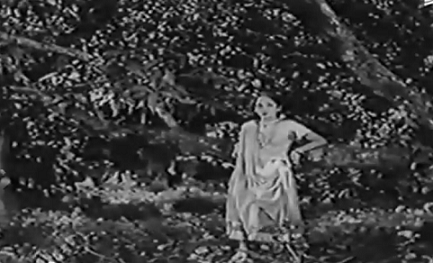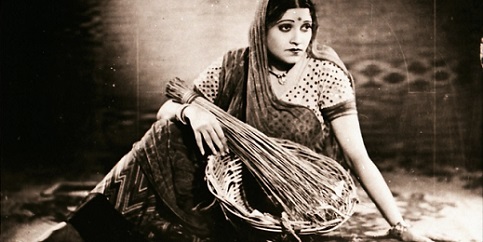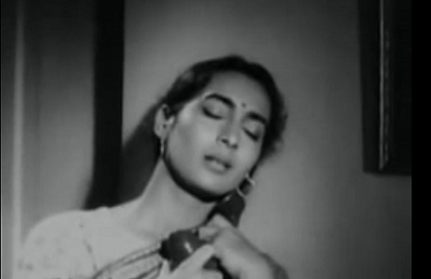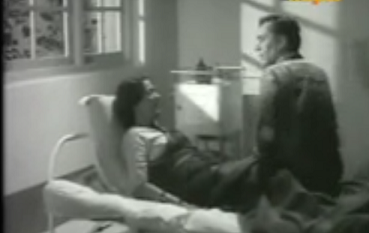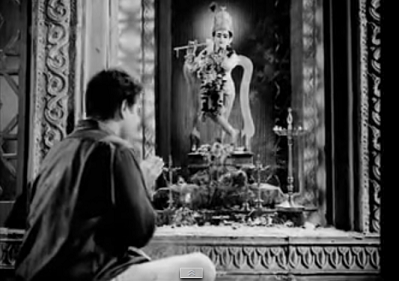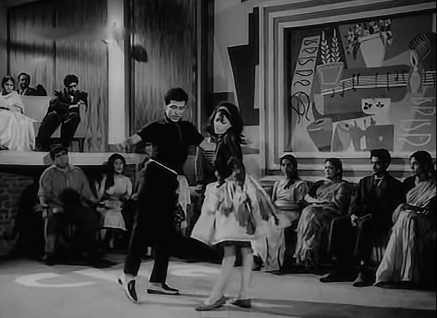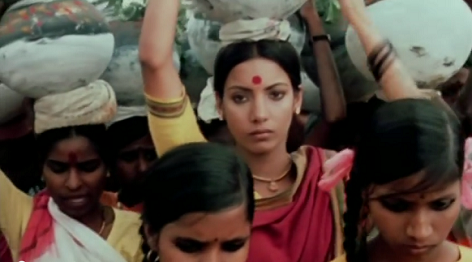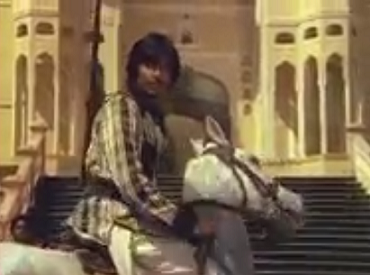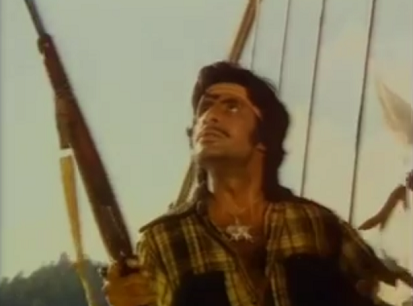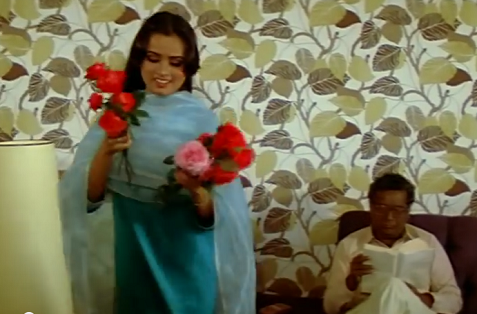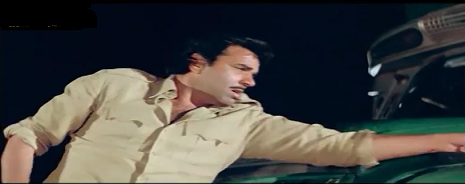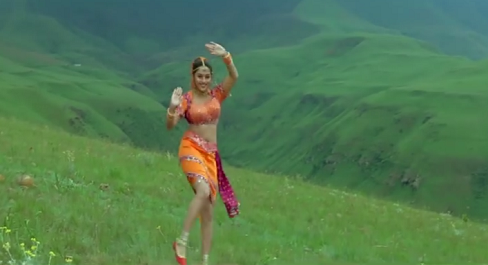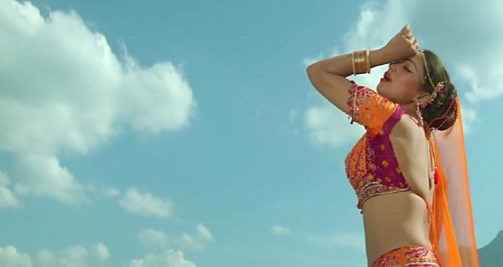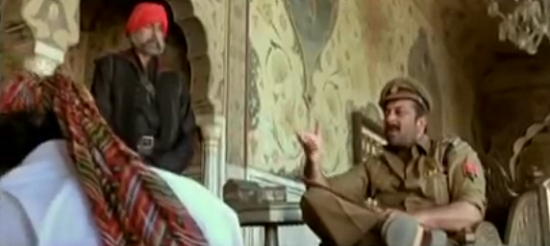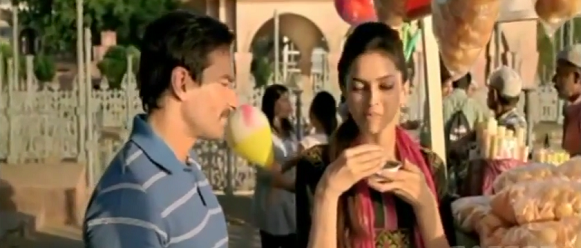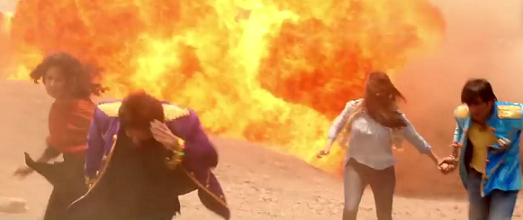Scheduled Caste lead characters in Hindi-Urdu cinema
(→How the debate began) |
(→How the debate began) |
||
| Line 46: | Line 46: | ||
[http://www.timescrest.com/reporters/Avijit-Ghosh# Avijit Ghosh] writes, ‘In Bollywood, [dalits] were primarily projected as victims. But in recent years, there's been a gradual change in their portrayal in Hindi films. The Dalit protagonists now are more assertive, confident and aware… Once the submissive underdog, he is now educated, assertive and ready to take on the system.’ | [http://www.timescrest.com/reporters/Avijit-Ghosh# Avijit Ghosh] writes, ‘In Bollywood, [dalits] were primarily projected as victims. But in recent years, there's been a gradual change in their portrayal in Hindi films. The Dalit protagonists now are more assertive, confident and aware… Once the submissive underdog, he is now educated, assertive and ready to take on the system.’ | ||
| − | Actually, both types of SC characters were emerging simultaneously: victims in arthouse | + | Actually, both types of SC characters were emerging simultaneously: victims in ''some'' arthouse films and assertive in big-budget cinema. By 1978 Filmistan had already had an SC hero who was assertive and ready to take on the system—with a gun. The superhit, big-budget ''Ganga ki Saugandh '' was the no.4 hit among [[Hindi-Urdu films: 1978]]. |
==The word ‘dalit’== | ==The word ‘dalit’== | ||
Many highly educated Scheduled Caste readers object to the word dalit. ([https://www.facebook.com/BabasahebAmbedkar/posts/472961839446596 Scörpian Mannoz wrote on the Facebook forum Babasaheb Ambedkar]), and many agreed with him, “who do u want to praise…reminding us we r dalit...stop usin the word dalit... no one deserv 2 b called dalit.”) | Many highly educated Scheduled Caste readers object to the word dalit. ([https://www.facebook.com/BabasahebAmbedkar/posts/472961839446596 Scörpian Mannoz wrote on the Facebook forum Babasaheb Ambedkar]), and many agreed with him, “who do u want to praise…reminding us we r dalit...stop usin the word dalit... no one deserv 2 b called dalit.”) | ||
Revision as of 23:51, 2 July 2017
Please send the names of films missing from this list as |
Contents |
The sources of this article include
Avijit Ghosh | August 20, 2011 The Times of India Rise of the Dalit hero
Jyotsna Siddharth, Cut to Caste, January 10, 2013, Feminists India
How the debate began
In its 16 December 2010 issue, The Guardian carried an article that read, ‘There was a buzz in 2007, when a dalit (the caste formerly known as "untouchables") was Bollywood's first-ever lead character in Eklavya: The Royal Guard…’
The Guardian is not just a newspaper. It is the conscience-keeper of the UK and wherever else its highly educated, often Oxbridge, liberal and left of centre readers might live. Indpaedia’s volunteers swore by it during their own Oxbridge days. On issues like race it has always followed the path of justice and has consistently stood by the under-privileged.
However, journalists who write for The Guardian, as well as its editors, are human. They are unlikely to publish a story unless they feel that it represents a new trend. Nirpal Dhaliwal’s article ‘How Bollywood is starting to deal with India's caste system’ (emphasis added) might not have been accepted by The Guardian if its editors had known that Filmistan had started to deal with India's caste system within five years of the first Indian talkie, i.e. as early as in 1936--or 64 years before the Guardian suddenly woke up. (The word 'Filmistan' is India’s own substitute for the slavish word ‘Bollywood.’)
What Nirpal Dhaliwal and The Guardian are either ignorant of (or do not wish to acknowledge) is that by 1936 the overwhelming majority of well-meaning, educated caste Hindus were disgusted with untouchability, and some with the caste-system itself. Avijit Ghosh reminds us of the by-then popular ‘Mahatma Gandhi's anti-untouchability campaign.’
The intensity of anti-untouchability feelings among most caste Hindus is reflected not only in the huge commercial success of most films with SC leading characters but, more importantly, in the fundamental changes that have taken place within Indian society and governance, leading to what Nirpal Dhaliwal calls ‘the most comprehensive affirmative action programme in the world.’
And, for the record,
i) Achhut Kanya (1936) was a mainstream, big-budget, A-list production with a stellar star cast and made by Bombay Talkies, arguably the most successful production house of its time.
ii) Achhut Kanya was a huge commercial success and featured one of the first hit songs to emerge from a Hindi-Urdu film, Main ban ki chidiya ban ké.
iii) It had Filmistan’s first-ever dalit lead character. It was she who sang this hit song. (Actress Devika Rani sang her own songs.)
iv) In Eklavya, the Scheduled Caste hero was one of five lead characters, and certainly not the main one. (The film’s main hero was the servant, who was not from an elite family either.) Contrariwise, in Achhut Kanya the dalit lead character was the focus of the story;
v) Several films with dalit lead characters followed, many of them being not mere A list films but mega-budget, A+ films that were major commercial hits.
As will be seen, hardly any film with an SC lead character has done badly at the box office.
Avijit Ghosh writes, ‘In Bollywood, [dalits] were primarily projected as victims. But in recent years, there's been a gradual change in their portrayal in Hindi films. The Dalit protagonists now are more assertive, confident and aware… Once the submissive underdog, he is now educated, assertive and ready to take on the system.’
Actually, both types of SC characters were emerging simultaneously: victims in some arthouse films and assertive in big-budget cinema. By 1978 Filmistan had already had an SC hero who was assertive and ready to take on the system—with a gun. The superhit, big-budget Ganga ki Saugandh was the no.4 hit among Hindi-Urdu films: 1978.
The word ‘dalit’
Many highly educated Scheduled Caste readers object to the word dalit. (Scörpian Mannoz wrote on the Facebook forum Babasaheb Ambedkar), and many agreed with him, “who do u want to praise…reminding us we r dalit...stop usin the word dalit... no one deserv 2 b called dalit.”)
Therefore, except when quoting or citing someone else, Indpaedia employs the neutral expression Scheduled Caste. Indpaedia uses the abbreviation SC in all its sub-headings, in headings that are too long, and when using the term for the second or subsequent times in the same discussion.
Below is a listing of SC leading characters in Hindi-Urdu cinema (Filmistan for short).
Films with SC lead characters
1936
Achhut Kanya (1936 ): This film broke new ground by depicting an upper caste man (Ashok Kumar) falling in love with an SC girl (Devika Rani). The very notion of such a love affair was revolutionary for its time, and remains a minority trend even in the 21st century.
The 1940s
Readers with access to a DVD/ CD/ VHS of this film are requested to share this information as a message to the Facebook community, Indpaedia.com. All information used will be gratefully acknowledged in your name.
Acchut (1940): Prints of this film do not seem to be available any more. Directed by Chandulal Shah for Ranjit Studios it was an A list film, though neither its budget nor its earnings were in the same league as Achhut Kanya. Its leading man (Motilal) was from the art, rather than commercial, stream.
The Motilal- Gohar starrer was promoted as part of Mahatma Gandhi's anti-untouchability campaign. The film consciously echoed the Mahatma’s message to eradicate untouchability. The film ends with the characters overcoming the caste barrier, which was extremely unconventional for that period: though one film had already attempted the theme with even greater success. (From Avijit Ghosh, Mahal Movies)
Panghat (1943) had SC characters in secondary but positive and sympathetic roles, as it tackled the next social evil of the day, which persists in the odd village in the 21st century: giving scheduled caste citizens access to the village well.
Panghat (lit: the banks of the water) is about Jamunaprasad Chaturvedi and his equally philanthropic wife Shantidevi, who are orthodox Brahmin zamindars (landlords), but who have built a community well from which anyone can draw water. The villagers love them. But when their son Jamunaprasad inherits the well from them, he restricts access to the well.
This, too, was an A list film, though it had a middling budget. Songs from Panghat are available on YouTube. (Dir: Mahesh Chandra, K.J. Parmar)
The 1950s
Mother India (1957) was the most successful of the Hindi-Urdu hit films of the 1950s and one of the biggest budget films of the decade. It did not specify the caste of its heroes but Mother India’s heroes were not from one of the three ‘upper’ castes, though they seemed to be ‘touchable.’ They were clearly not Brahmins, Rajputs or Banias. Indeed, they were in conflict with oppressive Brahmins and Banias (and with the bania’s gunman, Jwala Singh).
Though its heroes were not scheduled castes, it is important to mention Mother India because it was the first of three films that culminated in Ganga ki Saugandh.
Sujata belonged to the serious, art stream but had a major star cast and a musical set up associated with big budget films. The film’s Brahmin makers made fun of caste, especially untouchability, through the pleasant love story of a scheduled caste heroine and a caste-Hindu hero.
Sujata went on to make the 7th highest money among Hindi-Urdu films: 1959. Given its middling budget, in terms of return on investment the film would have ranked higher still.
A note about films’ box office ranks.
Sujata was no. 7 at the box office in 1959, but out of how many films? We know for certain that at least 90 Hindi-Urdu films were released in 1959. The actual number would have been somewhat higher.
The general rule since the late 1950s was that around two new Hindi-Urdu films would be released in most weeks, and one in the remaining weeks.
Even if only 90 Hindi-Urdu films were released in 1959, the weekly average was 1.73 films to be precise.
The total increased to 114 Hindi-Urdu films being released in the year 1980, 180 in 2005, and 234 in 2009.
The 1960s
Gunga Jumna (1961) was the second of three films that resulted in Ganga ki Saugandh.. Its heroine was identified as a ‘Gujariya.’ (The Gujjars have been accepted as a scheduled tribe in some states and the Badgujars as a scheduled caste at the national level. Gujjars in some other states are asking to be included in the scheduled tribe list.) The hero’s caste, we were told, was ‘higher’ than the heroine’s but (as in Mother India) he was shown in violent, armed conflict with the three ‘upper’ castes, with Kayasths being made fun of.
Gunga Jumna was a mega-budget Technicolor film and the most successful of Hindi-Urdu films: 1961.
Punarmilan (1964) : By now the subject of scheduled castes had also been taken up by art films. (Panghat was within the commercial gamut, though on the serious side.) The complete Punarmilan can be seen on YouTube. The film is about Dr. Mohan, who is seen as a Brahmin. Shobhna Bakshi and he decide to get married. During the marriage ceremony someone asks about Mohan's caste. Mohan says that he is an ‘untouchable.’ The marriage is called off.
Avijit Ghosh explains that the story centred around a doctor raised by an upper-caste family but actually a Harijan.’
Cha Cha Cha (1964) was a B film that did well for its budget because it was an entertainer that revolved about Western music and Western dance. The film’s leading character (played by its director Chandra Shekhar) was a scheduled caste who acquired fame through Western dancing. Cha Cha Cha can be seen in parts on YouTube.
Izzat (1968) was a big budget film and had two leading men, both played by Dharmendra. The two had the same Thakur (Rajput) father. The film’s real hero had a scheduled tribe mother and was bitterly anti-Thakur. He got to marry the film’s main, upper-caste heroine. The film’s other leading lady (played by the very young Dr. J. Jayalalithaa) was a tribal, whom the flippant, purely-Thakur hero married.
Izzat was the no.14 hit among Hindi-Urdu films: 1968, which meant that it was a moderate success, moreso considering that it was a serious film and not a mega-budget, globe-trotting spry thriller like that year’s no. 1 film, Aankhen.
The 1970s
Ankur (1974): ‘Laxmi, the low caste domestic help works [for] the local zamindar... The landlord’s son …asks Laxmi [Shabana Azmi] to prepare morning tea for him. Laxmi is aghast and … reminds him that that she is from a low caste to which he [replies] that he does not believe in caste and that she should prepare tea for him.’ (From Jyotsna Siddharth)
Ankur was one of many art films about injustices meted out to the scheduled castes.
Ganga ki Saugandh was a big-budget film because of its cast (Amitabh Bachchan, Rekha, Amjad Khan) and was a mega-hit, being the fourth biggest grosser of 1978, beaten only by three of Bachchan’s own all-time hits (Muqaddar Ka Sikandar, Trishul, Don).
The theme was the same as in Mother India and Gunga Jumna, i.e. violent conflict with the three ‘upper’ castes. However, now the hero was specifically shown as a scheduled caste. In the case of the heroine even her sub-caste (Chamar) was specified.
The 1980s
Hum Paanch (lit: ‘we five’) (1980) created excitement in pro-SC circles when word went around that this was another commercial film (after Ganga ki Saugandh) in which there was an SC hero, played by Mithun Chakraborty. However, his character’s caste is not clear. The ‘we five’ of the film’s title are five heroes who fight the oppression of the Thakur. A dialogue from the film informs us that united against the bad Thakur are “a slave [daas], two ‘untouchables’ [achhoot], a merchant [baniya] and a [good] Thakur.”
So, while Mithun’s character was a slave but probably not an SC, two of the film’s five heroes (both played by relatively minor actors) were definitely scheduled caste.
Hum Paanch was the no. 13 hit among Hindi-Urdu films: 1981. It was based on a story written by a Kannada Brahmin.
Souten (1983), a big-budget film set in the elite neighbourhoods and beaches of Mauritius, was, on the face of it, an unlikely candidate to have an SC leading character. And yet it had two major and positive SC characters (and one minor and self-destructive one).
The film had two heroines, Rukmani (Tina Munim), who was from a business family (and, likely, from a business caste, implied by the surname Prannath) but was a liability as a wife because she was ultra-modern. Radha (Padmini Kolhapure) was an SC and also the ideal Hindu woman and wife, being chaste, calm and patient.
(Sujata, too, had a similar idealisation of its SC heroine vis a vis her caste Hindu counterpart. ‘In the film, the character Sujata throughout draws a comparison between [her caste Hindu foster father’s] biological daughter Rama who is a college going ‘modern’ girl, who likes to read poetry and play sports. Sujata, on the other hand, manages the house and takes care of needs of her [foster] “parents”.’ Jyotsna Siddharth
The real heroine’s father was a scrupulously honest accountant whom the film’s hero, Shyam, trusted totally. Radha was the daughter of the incorruptible Gopal.
Souten was no. 6 among Hindi-Urdu films: 1983. It was directed by Saawan Kumar Tak and written by Vijay Kaul.
Paar (1984): Critic Tathagata Chatterji writes, 'Goutam Ghosh's award winning film shows the young Dalit couple, (played by Naseeruddin Shah and Shabhana Azmi), escaping to Cakcutta.' The film won multiple awards,invluding Best Actor for Shah,
Ghulami (1985) reverted to the Mother India, Gunga Jumna, Ganga ki Saugandh theme of setting the upper castes (especially the Rajputs) right and settling scores with them through violence. The film’s hero, Ranjeet Singh Chaudhary (Dharmendra), belonged to a ‘low caste,’ though his precise sub-caste was not mentioned.
This was a film made on an epic canvas, with lavish sets, exotic locations and a big star cast (three leading men and as many heroines). This stellar line-up was headed by the film’s ‘low caste’ hero. The Mithun character was serving in the Jat Regiment, and the implication was that he belonged to the elite, ruling Jat community. As early as in 1985, a full 25 years beore The Guardian article, this reversal of the hierarchy had already taken place in a film made by the Brahmin J P Dutta. The ‘low caste’ hero ranked above the Jat hero no.2
Did ‘low caste’ mean scheduled caste in the context of Ghulami? Absolutely. The film made it clear that Ranjeet belonged to a caste that had to be kept segregated.
Despite being a relentlessly tense and even a literary film (its most famous song began in highly literary Farsi [Persian]), Ghulami was the tenth biggest grosser among Hindi-Urdu films: 1985.
Tera Naam Mera Naam (1987/ pr., dir: RameshTalwar) was a breezy entertainer, like films from the commercial stream are. And yet it dealt with the serious subject of ‘reservations’ (affirmative action) with no upper caste bias. It had two heroes, the Brahmin Agnihotri and the scheduled caste Parmar. Agnihotri, the Brahmin boy, was shown arguing in favour of Caste-based reservations: India. Both were from middle class families and were unemployed.
Ravi Parmar, a handsome youth, belonged to a scheduled caste. He was happy go lucky vs. the serious Agnihotri. Parmar watched lots of TV and flirted around. However, there was no prejudice in this, because in the exams he did marginally better than the Brahmin Agnihotri.
Which of the two was the main hero? Well, both had equally big and equally good roles. However, it was the scheduled caste Parmar who got the main heroine, Ms. Sharma.
The actors of this middle-budget commercial film were totally unknown. Therefore, the film, too, remained unknown.
The 1990s
Samar (1999/ dir. Shyam Benegal, writer Ashok Mishra) was among the many art films that dealt with caste and had SC leading characters, male as well as female. To the extent that this multi-character film could be said to have had a hero, it was a scheduled caste film actor, Kishore (played by a very young Ashish Vidyarthi). The film’s story, which was about caste oppression, revolved around Nathu (played by Raghuvir Yadav).
Prem Granth (1996) was a big-budget film from the RK banner that, till the release of this film, had been India’s no.1 commercial banner. Prem Granth got a lukewarm reception at the box office, being the no.17 grosser among Hindi-Urdu films: 1996.
In Prem Granth ‘a socially ostracized [Madhuri Dixit character] was not able to confront her love’ [1]
Chachi 420 (1997) was produced and directed by Kamal Haasan, a Tamil Brahmin, two of whose later films took a strong pro-Muslim stand. At his peak he was the no. 2 star of Tamil films. In this film, a comedy, he acted as the music composer Jaishankar Paswan, a scheduled caste, in love with the daughter of Durgaprasad Bharadwaj, a conservative Brahmin businessman.
Chachi 420 ranked no. 13 at the box office among Hindi-Urdu films: 1997, despite being a middle-budget film with a non-Hindi mainstream hero.
After all these films with leading SC characters, and strong characters at that, let us finally come to what The Guardian would have the world believe was the film with Bollywood's first-ever SC lead character, and with the release of which Bollywood had, at long last, started to deal with India's caste system.
The 2000s
Chupke Se (2003) was a pleasant chick-lit romance by Shona Urvashi, and was not about caste. The heroine Megha Timgire’s name was not an obviously SC name. However, some Timgires are SC. Her father was a middle-rung income tax officer. There was a picture of Baba Saheb Dr. BR Ambedkar in the heroine’s house. But then he is a national hero, across castes and communities. However, the picture coupled with the heroine’s name suggested that Megha Timgire was supposed to be SC. (In ‘Guddu Rangeela,’ see below, Baba Saheb’s picture was used as a code to convey the heroes’ caste.)
Eklavya- The Royal Guard (2007) saw Sanjay Dutt play Pannalal Chohar, an ‘audacious’ Dalit police officer, who was not only proud of himself but also unapologetic about his origin [2]. He ‘not only asserts his Dalit identity but also bristles against the castebased feudal oppression that still pervades parts of Rajasthan.’ (Avijit Ghosh)
This was a big-budget film about Rajasthani royalty, with lavish sets and a big starcast. It had five leading men and three leading ladies. The cast was headed by a character who was a servant but belonged to an indeterminate ‘touchable’ caste. The SC hero ranked no.2 in the internal hierarchy of the film’s plot, ranking above three princes in terms of the length and importance (‘pivotality’) of his role.
However, it earned the 19th (or 24th highest profits) among Hindi-Urdu films: 2007. The film’s non-success had nothing to do with its SC hero no. 2, because, as pointed out, the focus was not on the SC hero but on the concept of, um, artificial insemination, which the audiences could not digest.
The 2010s
Rakta Charitra 1 (2010) was the biopic of Paritala Ravindra, and Maddela Cheruvu Suri. It was successful at the Telugu box office but only no. 29 among more than 160 Hindi-Urdu films: 2010
Rakta Charitra 2 (2010) did even worse at the Hindi-Urdu box office.
However, between them the two parts gathered a number of awards and nominations.
Aarakashan (2011): Though made by a filmmaker from the art stream, this film had a major commercial actor playing a bright young SC college lecturer who taught applied mathematics and then went to Cornell University for his Ph.D. A caste-Hindu girl had a crush on him. While he wooed her with poetry, she in turn asked him to come straight to the point, stop being senti[mental] and ‘show some action.’
Avijit Ghosh writes: ‘In mainstream Bollywood history, it would be hard to find a more assertive, erudite and historically-aware Dalit than the protagonist in Prakash Jha's Aarakshan… The portayal is indeed radical…Deepak is everything a traditional Bollywood hero is; only a little more. He is educated, articulate, aspirational yet an idealist - he is a Dalit of the New Millennium. He represents a new template of Dalit protagonists, a distinct departure from the traditional representation in Hindi films.’
Aarakashan (‘affirmative action’) was sought to be banned, sight unseen, by pro- affirmative action groups, which assumed that because the film had been made by a Brahmin, Prakash Jha, it would oppose affirmative action. The film was banned, again sight unseen, in some states for that reason. By the time the film’s strong pro-SC and pro- affirmative action stand was realised and the bans were lifted pirated DVDs of the film had done the damage.
Aarakashan was no. 28 at the box office among Hindi-Urdu films: 2011.
Court (2015: Marathi, English, Hindi) is about an Ambedkarite SC activist: he sings songs about social reform (against the backdrop of Babasaheb's portrait) and helps publish books on the same theme. He is framed in an extremely flimsy case. This arthouse film was declared the Best Film of the Year by the Government of India.
Guddu Rangeela (2015) has not one but two, eponymous SC heroes. And yet the words Dalit, Harijan, scheduled caste or ‘low’ caste are not used anywhere in the film. Codes are used instead. i) We see the picture of Baba Saheb Dr. BR Ambedkar in the heroes’ house, and i-a) the pictures of Kum. Mayawati and Mr. Kanshi Ram in that of their relative. ii) The heroes are from a community of singers, hence we could safely assume that they belong to the mirasi caste. iii) Rangeela told us that his marriage to Babli Hooda was an inter-caste marriage. Thus at least he was not Jat. iv) The casteist villain Billu Pehelwan (caste not specified, but he was the upholder of the caste system) said that ‘we don’t drink water in the houses of these people.’ This left the audience in no doubt about their being SCs.
Guddu Rangeela is a middle-budget, ‘multiplex film.’
Earlier Ghulami had mentioned that the hero was from a low caste without using an SC-specific expression. However, other clues, like children from the hero’s community being segregated, made the caste clear. Only Mother India and Gunga Jumna offered no clues other than a conflict with the three upper castes. Because of this ambiguity, Indpaedia has not boldfaced the titles of these two films.
Manjhi: the mountain man (2015) is about the heroic struggle of a man determined to cut a path through a tall hill, to connect his village with the world beyond the hill. The Manjhis are an Ati Dalit clan (i.e. even more backward and deprived than other SCs.) The caste element is mentioned in the beginning, after which the film concentrates on the selfless character of this untiring and principled man.
Sairat (Marathi/ 2016): Dir Nagraj Manjule The SC hero falls in love with a Patil girl.The film has broken all Marathi records. With a 3,000 per cent return on investment Sairat might hold the all India record for the highest return on investment in the history of Indian cinema, and by a very wide margin.
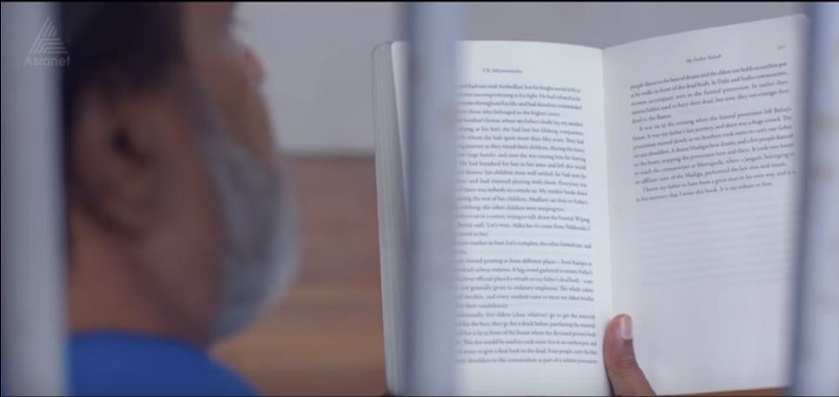
This “family biography” written by Y.B Satyanarayana is about the lives and experiences of the Madiga SC community of Telangana. Published in 2012, it is considered a classic among SC literature.
Kabali (2016) clearly indicates that the hero is an SC and an Ambedkarite.
Rangoon (2017) was a stylish, big-budget, period film. Its heroine is a glamorous, Westernised, top- notch film actress of the 1940s. She mentions that she is an achhoot (untouchable). Earlier she had revealed that her mother belonged to the banjara (gypsy) community of acrobats.
Begum Jaan (2017): One of the heroines, a pretty sex-worker, belongs to a scheduled caste. She reminds a Rajput sex-worker that in her community people do not burn women alive.
See also
Scheduled castes in Indian cricket teams
Scheduled Caste lead characters in Hindi-Urdu cinema
Scheduled caste talents in Indian cinema
...and countless British-era articles about individual castes and tribes. Just click 'Communities' in the 'Categories' box below this article or enter the name of the caste or tribe in the Search box at the top of this page
